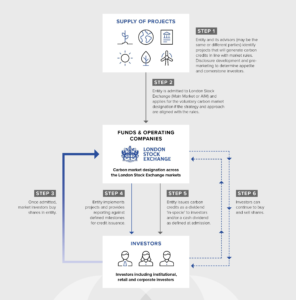generates carbon credit exchanges
The carbon credit exchange is a marketplace where carbon credits are sold and traded. There are two main types of market – the voluntary and regulatory markets. They each have their own rules and guidelines. These markets allow companies to offset their emissions, and have different benefits for different sectors.
The market for carbon credit exchange is expected to grow at a CAGR of 31% in the next five years. This is in part due to the continued focus on climate change. Industry sectors are also looking for ways to hedge their financial risks related to the energy transition. Companies are also encouraged to purchase credits to offset their internal corporate climate objectives.

Carbon credits can be purchased through either an over-the-counter (OTC) market or through an exchange. Generally, the price of a carbon credit is based on the volume of credits traded at a time. However, the underlying project can affect the price. For example, a community-based project that provides life-saving health benefits will be higher than a large-scale renewable energy project.
who generates carbon credit exchanges
Typically, projects that provide a variety of co-benefits are more valuable to buyers than industrial projects. These types of projects will be accredited by a third party. A company that has a large CO2 footprint may be required to offset its CO2 emissions by buying credits. In return, the project will have to create additional social and environmental benefits.
Some examples of these voluntary markets include the American Carbon Registry, the Chicago Climate Exchange, and the Verified Carbon Standard. While these markets do not have minimum price requirements, these voluntary markets tend to have lower prices for VERs than the regulatory market.
Similarly, the price of carbon credits depends on the number of credits being issued and the geographic location of the project. For example, a factory that emits 100,000 tons of CO2 will receive a certain amount of credits each year. If the company is able to reduce its emissions to zero, it can then sell any excess credits it has.
Voluntary markets are often a part of industry-wide schemes, but can also be independent. Depending on the rules, a company with a high carbon footprint may be required to offset its CO2 through purchasing carbon credits from another company. Similarly, a company that exceeds its emission levels can be fined.
Carbon credits are issued by national or international governmental or nongovernmental organizations. These organizations have the legal right to issue these types of credits. Credits are then registered and tracked in the marketplace. Buyers and sellers of credits can conduct business in real time.
Historically, carbon credits have been priced at a discount to the economic value of the impact. This is a result of a variety of factors, including the geography of the project, the size of the project, the vintage of the project, and the project’s delivery date.
Typically, a company that has a high CO2 footprint will be required to offset its CO2 through purchasing credits from another company. For example, if a factory produces 100,000 tons of CO2, it must hold allowances and offsets.